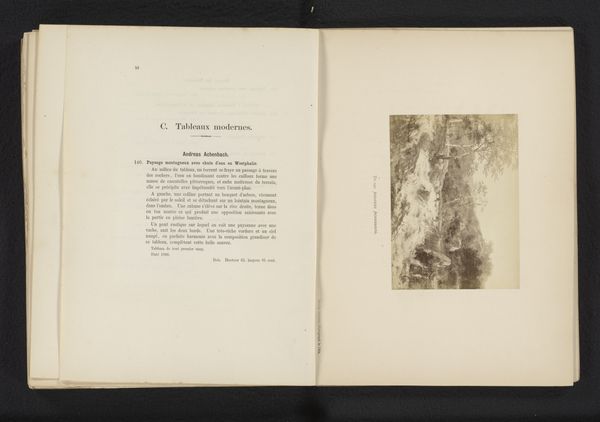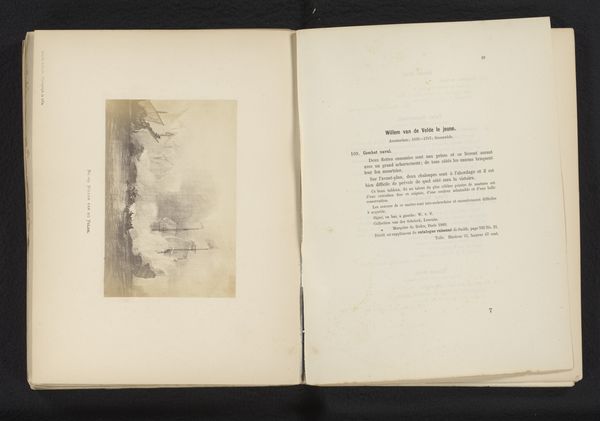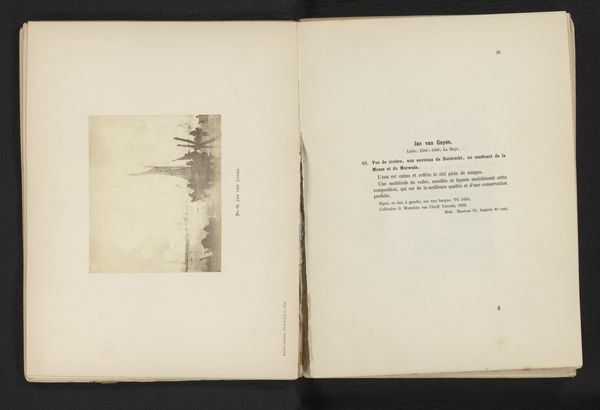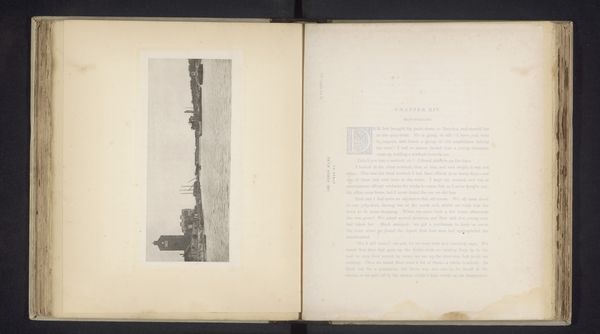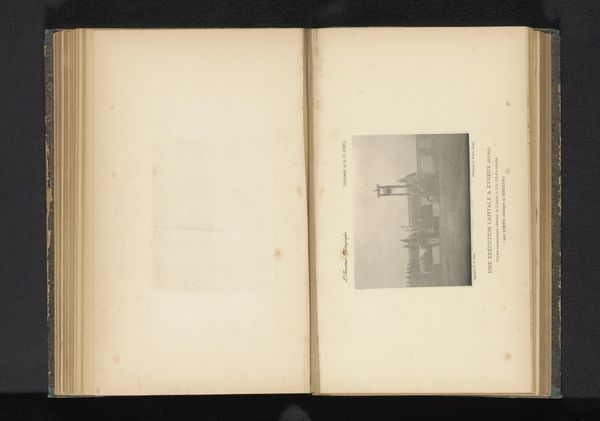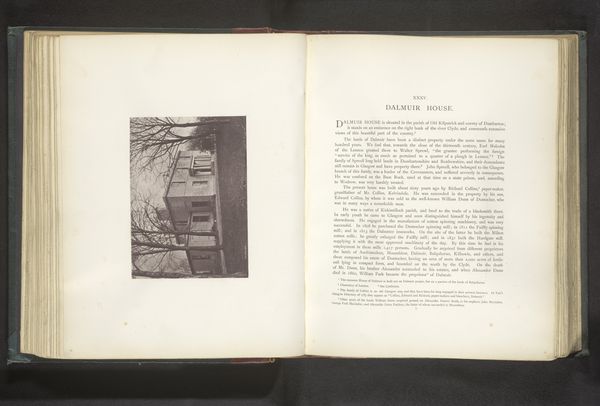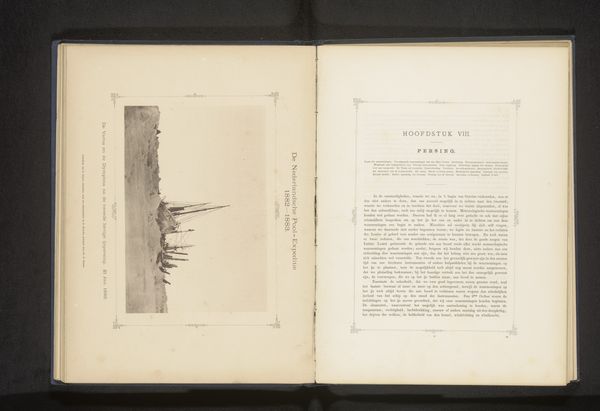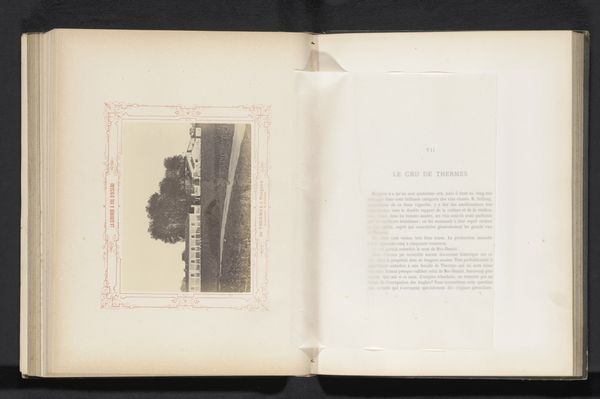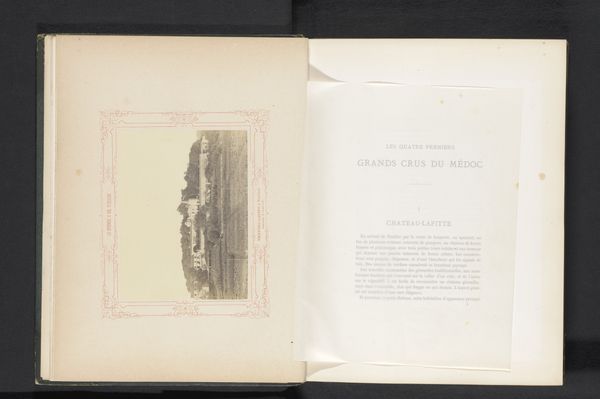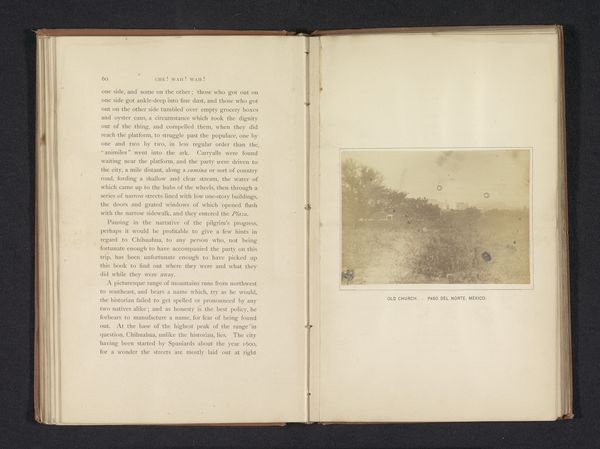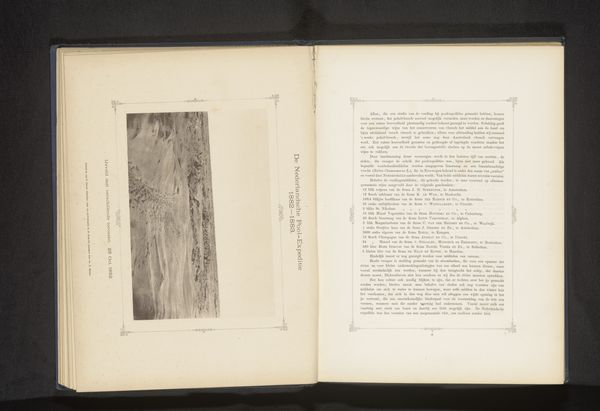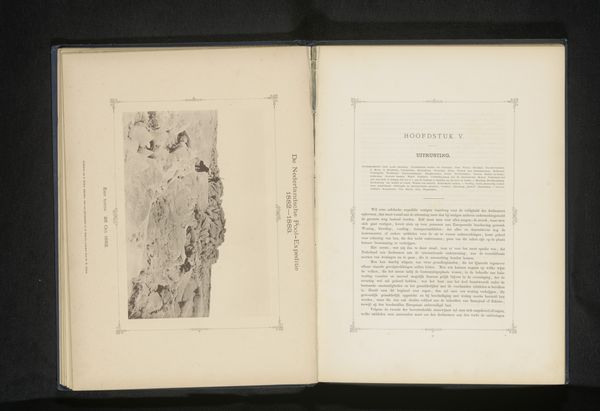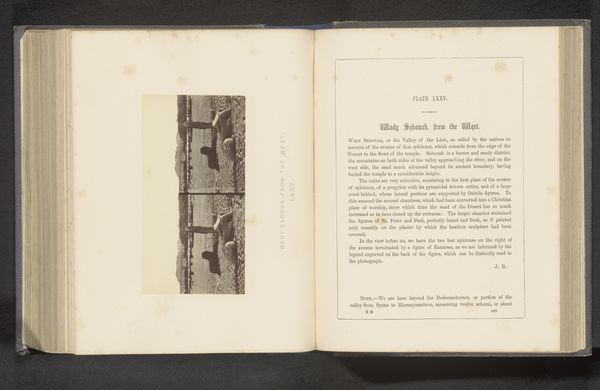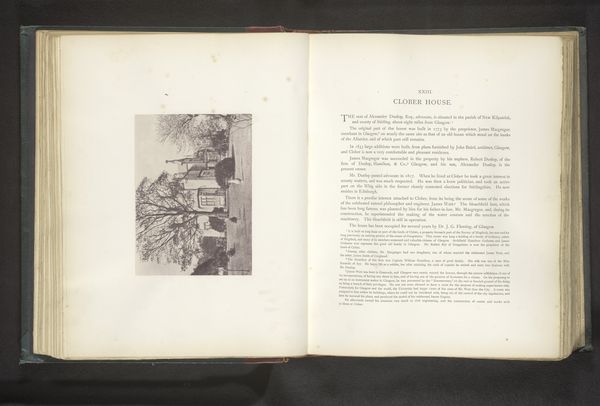
Fotoreproductie van een schilderij van een gezicht op Haarlem door Jan van Kessel before 1876
0:00
0:00
print, paper, photography
#
dutch-golden-age
# print
#
landscape
#
paper
#
photography
Dimensions: height 95 mm, width 117 mm
Copyright: Rijks Museum: Open Domain
Curator: Well, here we have a photographic reproduction of a painting depicting a view of Haarlem by Jan van Kessel, dating back to before 1876. It is rendered as a print on paper using photography. Editor: The tonal range here strikes me – those muted browns and grays give the image a solemn, almost wistful air. The composition, rather compressed, offers us just a slice of Haarlem's panorama. Curator: Indeed. And to delve into the materiality: consider the chemical processes involved in photography during that era. The transformation of the original painting through photographic reproduction necessarily alters our encounter with it. Mass reproducibility changed consumption. Editor: Absolutely. Beyond process, we should ask what exactly is being framed for consumption. Here is the landscape tradition being appropriated for, perhaps, nationalist purposes or, at the very least, an effort to preserve and monumentalize local or national heritage, especially important since this predates wide use of film photography and cheap production of photographs. Curator: You touch on something significant: the societal context in which van Kessel’s original painting and subsequently its photographic reproductions circulated. These images served—and continue to serve—a cultural function. One of framing and reinforcing our connection with physical locations. The industrial labor behind producing these images, as well as distributing them...that deserves examination, too. Editor: And if we situate the image within the timeline of Dutch colonialism, questions arise. Whose gaze is being privileged? Which narratives are being elevated at the expense of others? As images gain prevalence, they inevitably shape perceptions, constructing both individual and collective identities. Curator: Thinking about these prints on paper - what do we think about the role that these kinds of prints can serve in democratizing images and ideas. It allowed greater public access to an artist like van Kessel, but maybe changed our relationship to painting. Editor: Exactly. This has really broadened my thinking around photography. It is exciting to bring social and political awareness, while also maintaining engagement in the formal aspects and the medium.
Comments
No comments
Be the first to comment and join the conversation on the ultimate creative platform.
